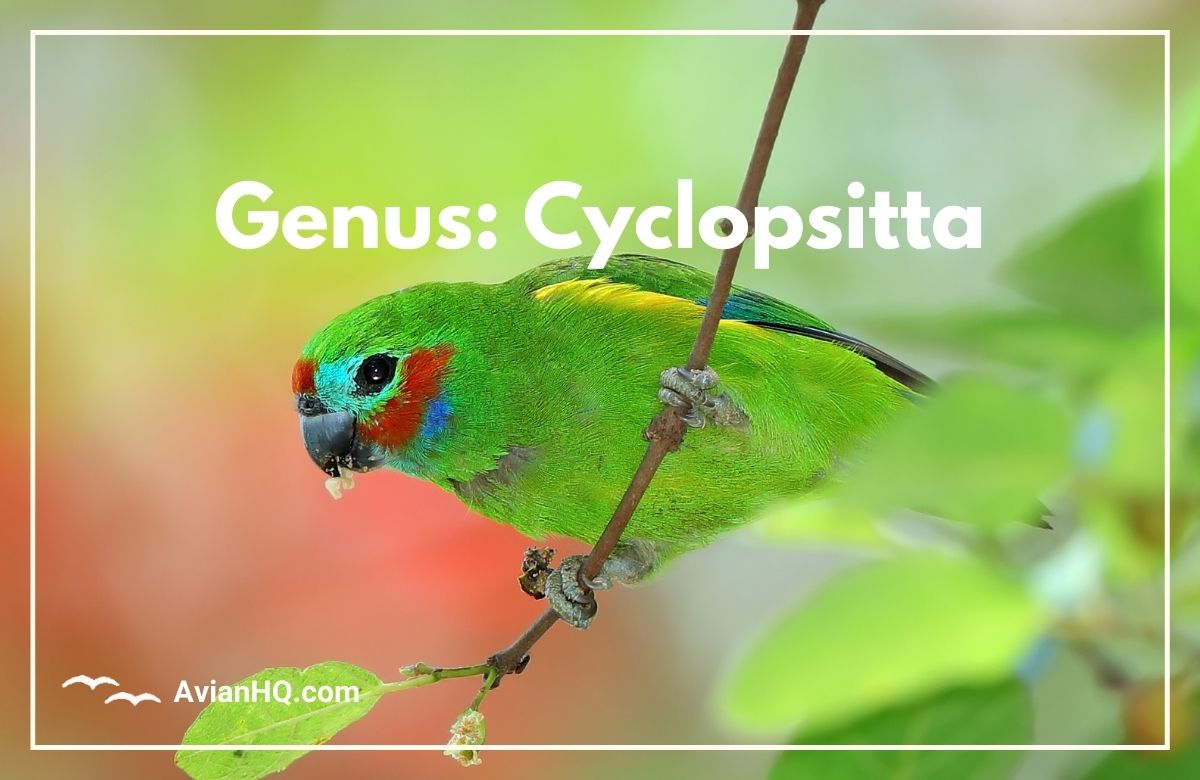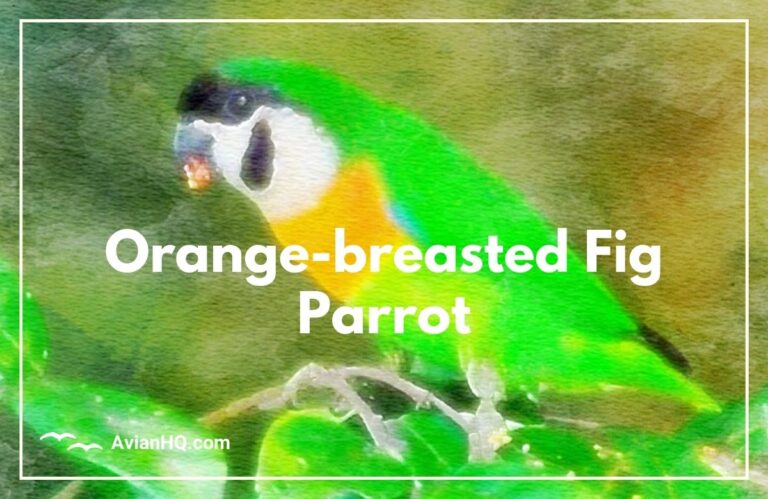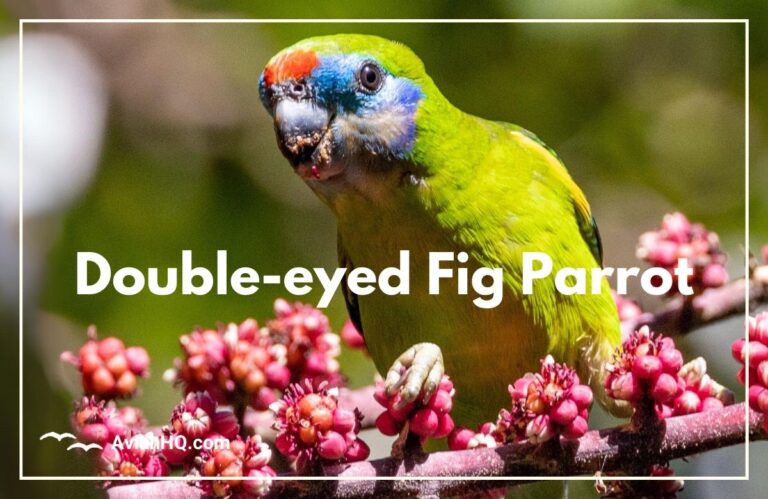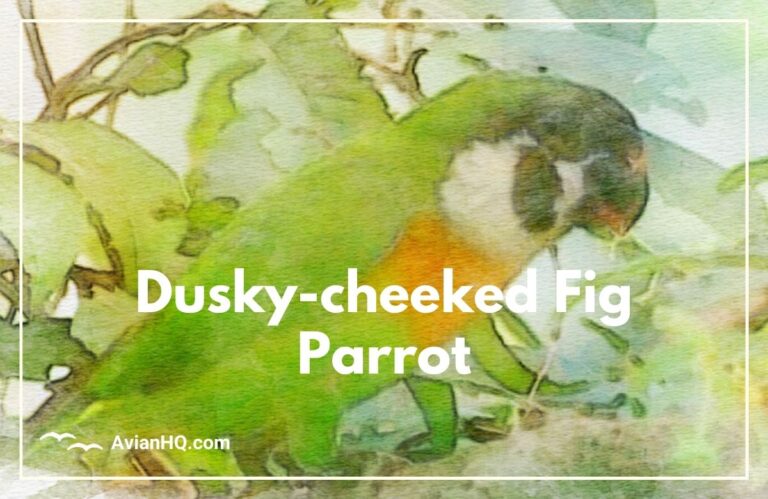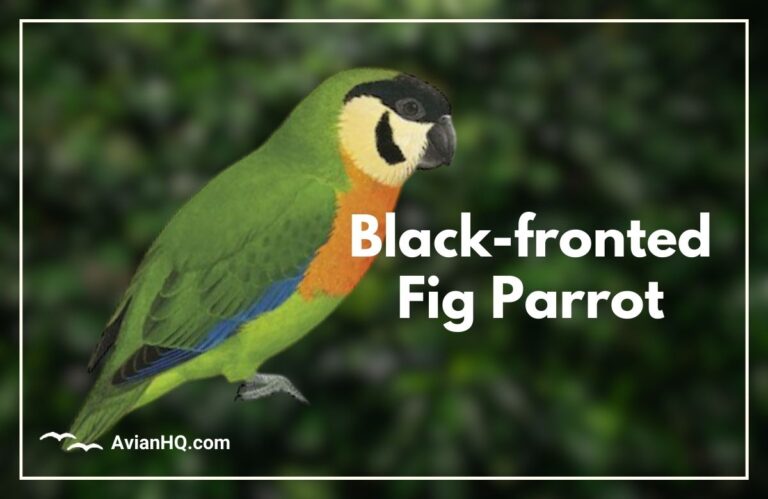Genus: Cyclopsitta
When most people think about parrots, large, brightly colored species like macaws, cockatoos, and parakeets typically come to mind. However, the genus Cyclopsitta encompasses a group of small, inconspicuous, and often overlooked parrots known as fig parrots. Found exclusively on the island of New Guinea, these fruit and seed-eating birds blend into the dense rainforest canopy.
While they lack the flamboyant beauty of some of their cousins, fig parrots have adapted a range of specialist behaviors and traits to thrive in their tree-shrouded habitat. And despite their elusive nature, they play an important ecological role in pollination while facing increasing threats from deforestation and the wildlife trade.
Meet the Mysterious Fig Parrots
Four species of true fig parrots make up the Cyclopsitta genus found only in New Guinea, including:
- Double-eyed Fig Parrot
- Orange-breasted Fig Parrot
- Dusky-cheeked Fig Parrot
- Black-fronted Fig Parrot
These secretive parrots offer a window into New Guinea’s spectacular forests where a jungle cacophony that has continued uninterrupted for eons.
While superficially similar, each species boasts a suite of unique adaptations to the niche where they live. But overall, they share several traits that enable them to thrive in their densely vegetated habitat.
Stealthy Attributes
Fig parrots generally have:
- Green plumage that serves as camouflage
- Distinct eye rings that remain visible when birds are hiding
- Compact size to move through dense foliage
- Quiet manner when feeding
By blending into the rainforest understory, fig parrots avoid larger predators while foraging primarily for figs, berries, and other fruit. Their near silence compared to other parrot species also avoids unwanted attention.
Species Spotlights
The four fig parrot species each have unique adaptations and behaviors for thriving in New Guinea’s lowland rainforests and mountainous cloud forests.
Double-eyed Fig Parrot
The brilliant green Double-eyed Fig Parrot sports distinctive crimson eye rings. Weighing about 3 ounces (85 grams) with a body length around 7 inches (18 cm), this small parrot inhabits lowland rainforests up to altitudes of 3,000 feet (914 meters).
Roaming in small flocks, these parrots use their strong beaks to break into figs and other fruit. Their bright red eye rings likely serve social signaling functions and remain visible even as birds try to hide in foliage.
While fairly common within their range, habitat loss poses an increasing threat. Currently though, their populations remain stable enough to warrant a conservation status of Least Concern.
Orange-breasted Fig Parrot
Slightly larger than its lowland cousin at 4 ounces (110 grams) and 8 inches (20 cm) long, the Orange-breasted Fig Parrot lives in New Guinea’s mountain forests up to 13,000 feet (3,962 meters).
As its name suggests, this parrot has vibrant orange plumage on its chest that contrasts sharply with emerald green upper body feathers. It feeds primarily on fruit and figs.
Due to ongoing habitat destruction, its numbers have dwindled enough to be designated Near Threatened. Targeted conservation efforts focusing on habitat protection will be key to ensuring the long-term survival of this range-restricted species.
Dusky-cheeked Fig Parrot
The aptly named Dusky-cheeked Fig Parrot sports olive-green plumage with a distinctive dark gray facial patch. Weighing around 3.5 ounces (100 grams) and reaching lengths of 7.5 inches (19 cm), it inhabits lowland and hill forests of New Guinea.
Foraging in small flocks, its diet consists primarily of figs and other fruit. And compared to other fig parrots, the Dusky-cheeked vocalizes more frequently with sharp squawks and whistles.
Roaming over a fairly extensive territory and with no imminent threats, this species has been classified as Least Concern conservation-wise. Monitoring will remain important though as habitat diminishes.
Black-fronted Fig Parrot
The brilliant green Black-fronted Fig Parrot lives up to its name with a distinctive black cap and facial area. One of the larger fig parrots at 5 ounces (140 grams) and 8.5 inches (22 cm) long, it inhabits lowland rainforests and second-growth woodlands.
This social species travels in small flocks foraging primarily for fruit, figs, and seeds. However, habitat destruction poses an increasing threat, leading to its designation as Near Threatened. Protecting sufficient habitat will represent a conservation priority going forward.
Behavior and Intelligence
While small and unassuming, fig parrots exhibit some fascinating behaviors and notable intelligence.
Clever Birds
Fig parrots display problem-solving skills to obtain food, such as removing obstacles to reach figs or manipulating access points. Their brains are proportionally large relative to their compact bodies.
Researchers have documented tool use as well. For example, a Double-eyed Fig Parrot was observed modifying bamboo leaves into a spoon-like apparatus to access water collecting in stumps left by tree falls.
Fig parrots are remarkably innovative at using tools and solving problems to exploit food sources.
Complex Social Dynamics
All Cyclopsitta parrots are highly social, traveling in small groups of less than 20 individuals. Pairs form strong monogamous bonds and coordinate to raise young together.
Their flocks utilize a range of vocalizations including contact calls, alarm calls, and aggression calls to maintain dynamics. And their eye rings likely facilitate visual communication cues as well even while camouflaged.
Fig parrots nest in tree cavities with females laying 3-4 eggs measuring 0.8 inches (2 cm) that she incubates for about 20 days while relying on the male for food. After hatching, chicks fledge in 6-7 weeks.
Cultural Significance
While overlooked by outsiders, fig parrots carry important cultural symbolism for indigenous groups across New Guinea.
Myths and Folklore
Fig parrots play a recurring role in traditional stories and folklore originating from native clans throughout New Guinea.
They often appear as supporting animal characters—using their intelligence to assist tribal heroes or acting as messengers or familiars for spirits and deities linked to the forest, nature, and biodiversity.
Ceremonial Value
Various indigenous groups also traditionally used fig parrot feathers, bills, and other body parts for cultural regalia, rituals, and coming-of-age ceremonies.
For the Kalam people of highland New Guinea for example, warriors wore fig parrot feathers during initiation rites. And fig parrot bills were commonly integrated into head-dresses used while conducting important harvest ceremonies.
Fig parrots remind us of our tribe’s connection to and utter dependence on the bounties of the rainforest homelands gifted to our ancestors.
By incorporating fig parrot elements, tribal groups honored their symbiotic relationship to the environment supporting their livelihoods and way of life.
Threats and Conservation
While fig parrots remain fairly widespread in New Guinea, habitat loss poses increasing risks, especially for mountain species with smaller ranges.
Deforestation
Extensive logging and land clearing for palm oil plantations and mining destroy vital rainforest habitat. From 2001-2021, New Guinea lost 1.2 million hectares of old growth and primary forests.
Highland species like the Orange-breasted Fig Parrot with tiny global ranges numbering just over 10,000 mature individuals are most vulnerable to deforestation.
Wildlife Trade
Trapping for the illegal pet trade also threatens certain fig parrot species. Their high intelligence, unique appearance, and mimicking ability fuel demand.
Conservation groups estimate that between 1986 and 2016, roughly 20,000 fig parrots were legally exported as pets. But the actual black market trade volume remains unknown.
Protection Efforts
While all fig parrots remain officially Least Concern or Near Threatened, continued habitat loss could rapidly deteriorate their outlook. Bolstering protections remains vital.
Key goals involve designating protected forest reserves, regulating logging, enforcing wildlife trade bans, and maintaining connectivity between habitat patches to support healthy gene flow. Raising local community support provides equal importance.
Conclusion
While overlooked and mysterious compared to their flashy, vocal cousins, fig parrots remain captivating in their own right. Their unique adaptations—from green camouflage plumage to annoyingly loud flocks—all facilitate survival in New Guinea’s dense forests.
And despite their elusive nature, fig parrots have deeply rooted cultural significance for indigenous groups, featuring prominently in folklore and rituals. These complex birds remind us of the marvels that can emerge from isolated island ecosystems like New Guinea.
However, rampant habitat destruction now threatens the future existence of these ecologically important parrots. Protecting sufficient rainforest corridors will prove critical over coming decades if these beings, shaped through eons of evolution, are to persist into the future.
Bolstering and enforcing environmental protections remains key. But equal priority must involve supporting indigenous groups to steward their ancestral lands while maintaining traditional practices interwoven with forest health. With commitment from conservation groups and local communities alike, a future exists where both humans and parrots benefit.

